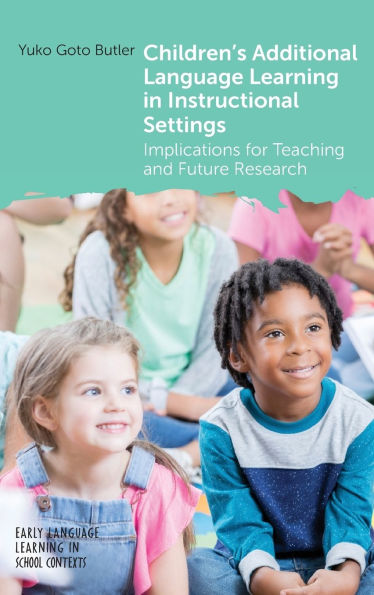Children's Additional Language Learning in Instructional Settings: Implications for Teaching and Future Research
This book provides the first comprehensive overview of young children’s language learning in pre-primary and primary education. It collates research to date on language development and pedagogy among children learning a language in addition to their home language(s) in instructional settings, providing readers with a thorough understanding of the topic and directions for further study. The book promotes a learner-centered approach to research and teaching and encourages critical reflection on how best to conduct research among children. It recognizes the substantial diversity of young language learning experiences and pays attention to individual differences and variability in children’s language development, embracing an ecological perspective sensitive to contextual factors. Closing the gap between research and practice, each chapter opens with pedagogical or policy-related questions, explores relevant theories and research findings from instructed second language acquisition, and offers discussion questions and recommended reading for further reflection and study. This will be invaluable reading for all those who are undertaking research and working with young language learners.
1146633462
Children's Additional Language Learning in Instructional Settings: Implications for Teaching and Future Research
This book provides the first comprehensive overview of young children’s language learning in pre-primary and primary education. It collates research to date on language development and pedagogy among children learning a language in addition to their home language(s) in instructional settings, providing readers with a thorough understanding of the topic and directions for further study. The book promotes a learner-centered approach to research and teaching and encourages critical reflection on how best to conduct research among children. It recognizes the substantial diversity of young language learning experiences and pays attention to individual differences and variability in children’s language development, embracing an ecological perspective sensitive to contextual factors. Closing the gap between research and practice, each chapter opens with pedagogical or policy-related questions, explores relevant theories and research findings from instructed second language acquisition, and offers discussion questions and recommended reading for further reflection and study. This will be invaluable reading for all those who are undertaking research and working with young language learners.
159.95
In Stock
5
1

Children's Additional Language Learning in Instructional Settings: Implications for Teaching and Future Research
358
Children's Additional Language Learning in Instructional Settings: Implications for Teaching and Future Research
358
159.95
In Stock

Product Details
| ISBN-13: | 9781800413788 |
|---|---|
| Publisher: | Channel View Publications |
| Publication date: | 06/10/2025 |
| Series: | Early Language Learning in School Contexts , #11 |
| Pages: | 358 |
| Product dimensions: | 6.15(w) x 9.20(h) x 0.60(d) |
About the Author
From the B&N Reads Blog
